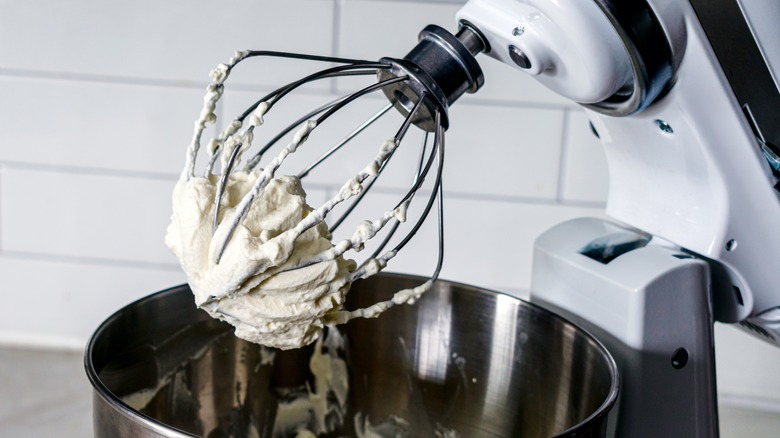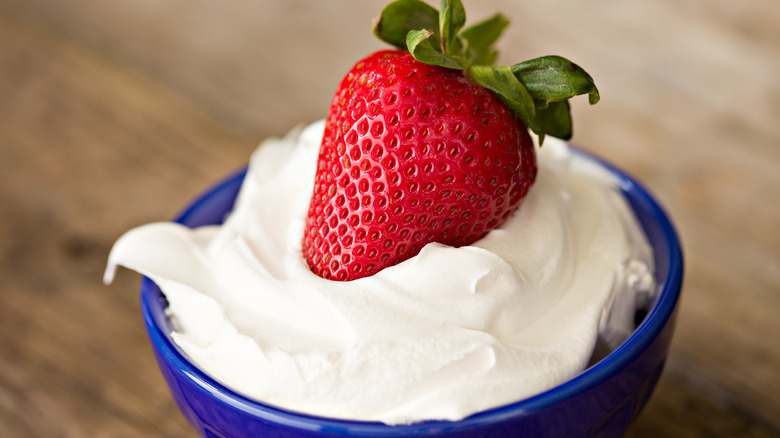The Ideal Temperature For Whipping Cream, According To Science
Making homemade whipped cream is like a magic trick — turning heavy buttercream into an airy mound of fluff that melts in your mouth. And since there's just no substitute for the texture, it's a trick that every baker must master. You don't need many tools and just one ingredient, but you do need one key tip to get the best result — the cream must be chilled, more precisely, under 50 degrees Fahrenheit, to get great whipped cream.
Cream has clusters of butterfat molecules suspended in liquid, and the whipping action breaks them apart and pushes air between them. Cold clusters of fat molecules stick together to hold the air in place, but if the cream warms up, the butterfat melts and can no longer contain the bubbles. This melting action starts to take place above 50 degrees Fahrenheit, which is why cream below that point whips up the best.
Chill everything well for the best whip
Making sure your cream is cold is a great first step to the best whipped cream. Your refrigerator should be keeping foods at 40 degrees Fahrenheit anyhow, but don't pull your carton out too early in prep and forget about it. If you have, or your kitchen is on the warm side, it's great insurance to chill the bowl and whisk to ensure the cream stays nice and chilly.
So what happens if you try to whip cream that's warmer than 50 degrees? You'll need to work harder, first of all, whisking longer to get the air bubbles into the cream which has the added problem of further heating up the whole project. The resulting whipped cream won't have as much air whipped into it, so the result will be denser, with less airy softness. The chilled fat globules that hold the air in place also hold the watery components where they are, so warmer whipped cream will have a grainy consistency. Chilling your cream makes such a difference, and doesn't even take much planning — just remember not to bring the cream out too early when you whip up your next batch!

